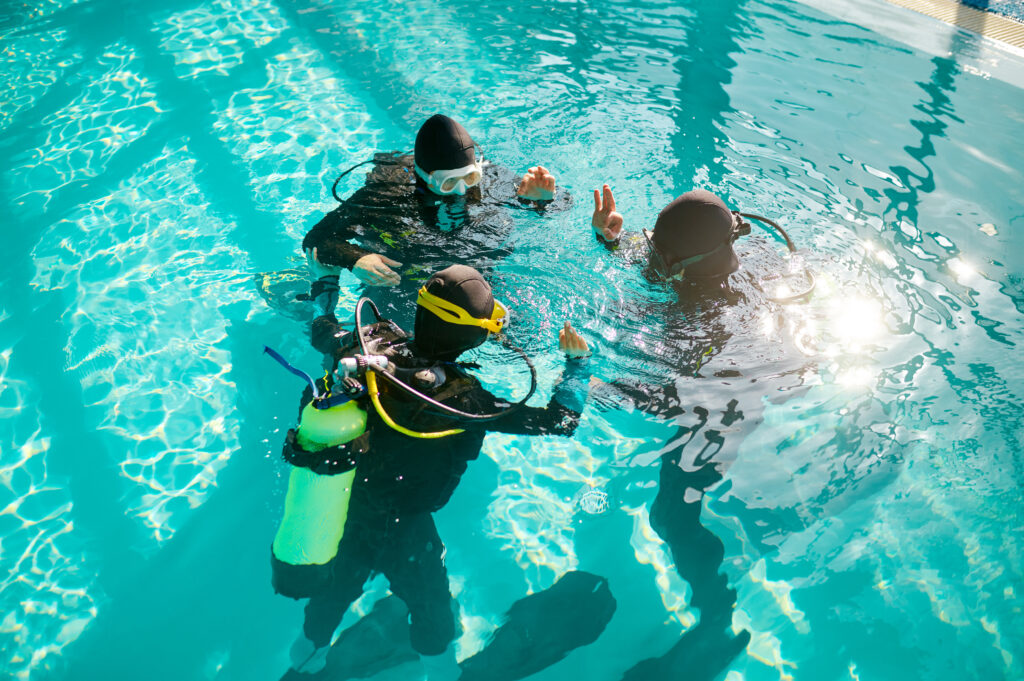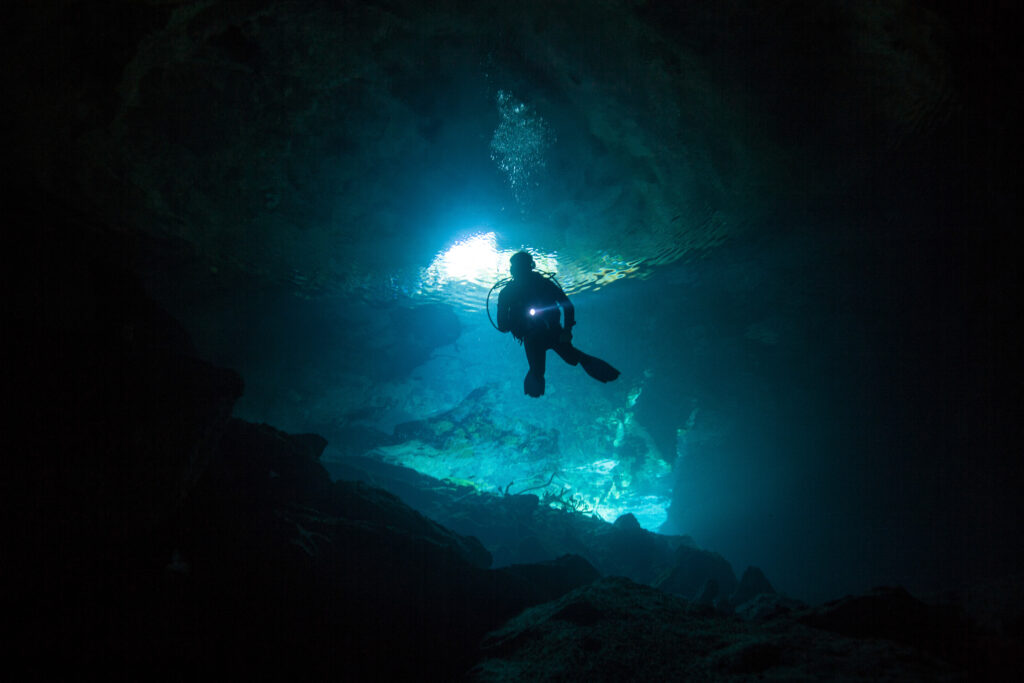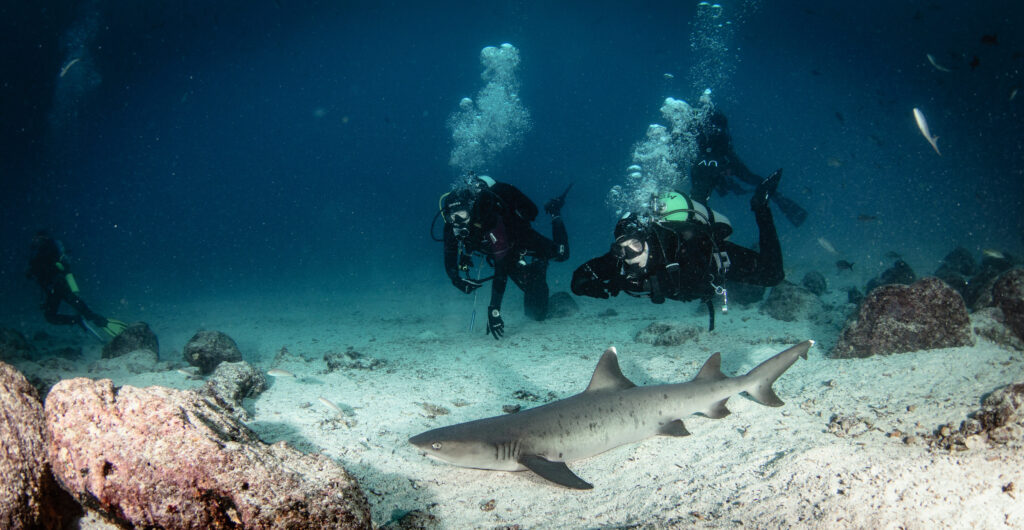What is a Confined Water Dive?

A confined water dive is a type of scuba diving activity that takes place in a pool or other shallow, current-free underwater environment.
What is a Scuba Diver?

What is a Scuba Diver? A scuba diver is a person who engages in the recreational or professional activity of swimming underwater using SCUBA equipment. The term “scuba” is an acronym for “self-contained underwater breathing apparatus,” which allows scuba divers to breathe comfortably beneath the water’s surface while exploring the aquatic world at their leisure. […]
What is Scuba Diving?

Scuba diving is a recreational and professional activity where individuals explore underwater environments using self-contained underwater breathing apparatus (SCUBA) equipment. This equipment allows divers to stay underwater for extended periods, enabling them to experience marine life, shipwrecks, caves, and other submerged wonders. The ability to explore these otherwise inaccessible areas has made scuba diving a popular pursuit for adventure enthusiasts, marine biologists, and professional divers alike. Since its modern development in the 20th century, scuba diving has attracted millions of people globally, offering a unique blend of excitement, discovery, and tranquility beneath the waves.
What is the Auto-Closure Device (ACD)?

The Auto-Closure Device (ACD) represents a significant advancement in scuba diving technology, specifically within the realm of diving regulators. This device automatically seals the regulator’s first stage when it is detached from the cylinder, preventing water, contaminants, and particulates from entering the system. By maintaining a clean and dry first stage, the ACD significantly enhances the reliability and longevity of scuba equipment, thereby improving diver safety. This entry delves into the origins, technicalities, functionalities, and safety implications of the ACD, illustrating its crucial role in modern scuba diving.
What is Open Circuit Scuba?

Open circuit scuba diving is a method of underwater diving in which the diver breathes from a tank of compressed gas and exhales directly into the water. This system is contrasted with closed-circuit systems, where exhaled gas is recycled and re-breathed. Open circuit scuba is the most common and widely used system in both recreational and professional diving. It is valued for its simplicity, reliability, and the extensive training programs available to certify divers. The ease of use and availability of open circuit scuba equipment have made it a cornerstone of underwater exploration.
What is an Octopus Regulator?

The octopus regulator is an essential piece of scuba diving equipment, designed to provide an alternative air source in the event of an emergency. This spare demand valve is connected to the first stage of a diving regulator, ensuring that divers can continue to breathe even if their primary regulator fails.
What is an Inflator Valve?

An inflator valve is a crucial component of scuba diving equipment, particularly in buoyancy compensators (BCDs), allowing divers to adjust their buoyancy underwater. By adding or releasing air into the BCD, divers can achieve neutral buoyancy, making it easier to maintain their position in the water. The inflator valve’s functionality directly influences a diver’s control and safety, making it an essential element for any diving expedition.
What is a DIN Valve?

A DIN valve is a type of valve used in scuba diving equipment, specifically for connecting a scuba tank to a regulator. The term “DIN” stands for “Deutsches Institut für Normung,” which translates to the German Institute for Standardization. This institute is responsible for developing and maintaining the standards that define the specifications for these valves. DIN valves are known for their robust design and reliable performance, making them a popular choice among divers, particularly in Europe and in technical diving communities.
What is Pounds Per Square Inch (PSI)?

Pounds per square inch (PSI) is a unit of pressure widely used in various fields, including scuba diving. Understanding PSI is crucial for divers because it directly relates to the equipment they use and their safety underwater. In scuba diving, PSI measures the pressure exerted by gas within a scuba tank, which is essential for breathing underwater. This unit helps divers know how much air they have left in their tanks, enabling them to plan their dives and avoid running out of air while submerged.
What is the Primary Second Stage?

The primary second stage, commonly referred to as the ‘primary,’ is a vital component of the scuba diving regulator system that enables divers to breathe comfortably and efficiently underwater. It consists of the mouthpiece and the purge valve and plays a crucial role in ensuring a smooth, controlled air supply from the high-pressure tank to the diver’s mouth. This entry discusses the primary second stage, its various features, and its function in the context of the broader scuba diving experience.
